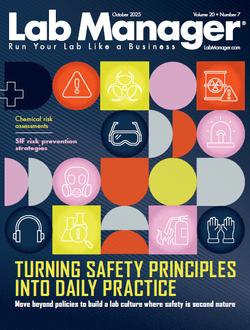A unique partnership has piloted a new adaptive traffic signal control technology — smart traffic signals — that promises to dramatically reduce harmful vehicle emissions and frustratingly long travel times through urban neighborhoods.
With funding support from three Pittsburgh foundations, Carnegie Mellon University has worked with the City of Pittsburgh and East Liberty Development Inc. to deploy the technology for a network of traffic lights serving the busy East Liberty area of the city.
 "The reductions of 40 percent in vehicle wait time, nearly 26 percent in travel time and 21 percent in projected vehicle emissions realized in this pilot are remarkable," said CMU President Jared L. Cohon. "I'm proud of CMU's team, which developed this first-in-the-world technology, and am equally proud of the partnership approach typical of Pittsburgh that made this pilot possible."
"The reductions of 40 percent in vehicle wait time, nearly 26 percent in travel time and 21 percent in projected vehicle emissions realized in this pilot are remarkable," said CMU President Jared L. Cohon. "I'm proud of CMU's team, which developed this first-in-the-world technology, and am equally proud of the partnership approach typical of Pittsburgh that made this pilot possible."
Pittsburgh Mayor Luke Ravenstahl cheered the pilot's success as "a breakthrough in making our city's traffic system work far more efficiently without having to resort to expensive widening roads, eliminating street parking, or re-routing. It makes the city more attractive to employers and residents alike."
Stephen Smith, director of the Intelligent Coordination and Logistics Laboratory in CMU's Robotics Institute, tackled the difficult challenge of perennially congested road networks in urban centers.
Combining concepts from the fields of artificial intelligence and traffic theory, his team first developed technology to allow traffic signals to communicate with one another and collaboratively adapt to actual traffic conditions in real time. The second step was to establish proof of the concept using a simulation model of Pittsburgh city traffic.
The latest step has been the pilot project that has successfully demonstrated traffic signals have the ability to react to quickly changing conditions, reducing traffic congestion and the resulting extra vehicle emissions. The next step will be to expand the pilot to demonstrate the technology on a bigger scale.
The groundbreaking technology was sponsored by the Traffic21 Initiative at CMU's Heinz College. Traffic21 was launched in 2009 with funding from the Henry L. Hillman Foundation.
Grants to Traffic21 from The Heinz Endowments' Breathe Project and from the Richard King Mellon Foundation provided the funding for the pilot.
"This type of technological breakthrough is just what we hoped could happen when Traffic21 was created with a broad community partnership led by CMU," said Pittsburgh business leader and philanthropist Henry Hillman.
"We are now beginning to see how Pittsburgh can be positioned to be a leading city on an international scale in demonstrating how low-cost, easy-to-implement technological solutions can reduce traffic congestion, vehicle fuel consumption and emissions while also improving safety and air quality."
CMU recently launched the Wilton E. Scott Institute for Energy Innovation, a major research and education initiative focused on improving energy efficiency and developing new, clean, affordable and sustainable energy sources.
A unique partnership has piloted a new adaptive traffic signal control technology — smart traffic signals — that promises to dramatically reduce harmful vehicle emissions and frustratingly long travel times through urban neighborhoods.
With funding support from three Pittsburgh foundations, Carnegie Mellon University has worked with the City of Pittsburgh and East Liberty Development Inc. to deploy the technology for a network of traffic lights serving the busy East Liberty area of the city.
To continue reading this article, sign up for FREE to

Membership is FREE and provides you with instant access to eNewsletters, digital publications, article archives, and more.


 "The reductions of 40 percent in vehicle wait time, nearly 26 percent in travel time and 21 percent in projected vehicle emissions realized in this pilot are remarkable," said CMU President
"The reductions of 40 percent in vehicle wait time, nearly 26 percent in travel time and 21 percent in projected vehicle emissions realized in this pilot are remarkable," said CMU President 






